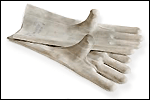 Free technical library
Free technical library
 Antennas. Theory. Schemes, articles, descriptions
Antennas. Theory. Schemes, articles, descriptions
Free library / Schemes of radio-electronic and electrical devices

 We recommend reading in our Free Technical Library:
We recommend reading in our Free Technical Library:
Antenna matching with feeder

HF Antenna Section. This question interests many radio amateurs. It occurs, for example, when it is necessary to connect a symmetrical two-wire 300-ohm feed line to the antenna instead of a 75-ohm coaxial cable or, conversely, when replacing a 300-ohm open line with a 75-ohm coaxial one. The feeder can not always be directly connected to the antenna, bypassing the matching device. The issue of performing a compensated transition (or matching device) from the antenna system to the feeder line is one of the main ones in the design of antennas. It is mainly aimed at reducing losses in the feeder by providing a regime in it close to that of a traveling wave. The main feeder line is usually the longest. Therefore, it is desirable to coordinate it better with the load ... >>
Beginner radio amateur. Tools

Section Beginner radio amateur. In the first lesson, I will tell you what tools you will need for further studies. Firstly, the most important thing is a soldering iron, it should be from 20 to 60 watts. A 20-25 watt soldering iron is preferable, as a 60 watt soldering iron is too bulky and too powerful. Secondly, solder and rosin are needed, however, you can buy solder with rosin, then you will not need to buy rosin separately. Thirdly, you will need scissors, pliers, a screwdriver and a file. It is also desirable to have a small vise. I almost forgot, you still need a lot of thick cardboard ... Also, in the future, for the manufacture of high-quality boards, you will need textolite, ferric chloride or blue vitriol ... >>
Electric irons

Electrical section. The most commonly used electrical appliance is the electric iron. After all, indeed, for example, a refrigerator with a stretch can be replaced with a cellar, a washing machine with a washboard and hard-working hands, but today hardly anyone knows how to use a rubel and a rolling pin for ironing clothes, but a coal iron (even if someone inherited it ) Modern fabrics are dangerous to iron. Structurally, the iron consists of an aluminum or cast iron sole, into which a tubular electric heater (TEN) is pressed, a casing made of heat-resistant plastic, separated from the sole by a heat-insulating gasket, a handle and a cover (the casing, handle and cover form the body of the iron). Other additions - an automatic thermostat, a steam humidifier and a sprinkler (together with a water tank) - are also mounted under the cover of the iron body. To connect the iron to the electrical network, a connecting cord with a movable input is used. ... >>
 To any article in this section and all Encyclopedias you can leave your comment.
To any article in this section and all Encyclopedias you can leave your comment.
 Antenna theory articles
Antenna theory articles
Articles on antenna theory; descriptions on antenna theory: 19 articles
 All articles on antennas
All articles on antennas
 Latest news of science and technology, new electronics:
Latest news of science and technology, new electronics:
Solidification of bulk substances
30.04.2024
There are quite a few mysteries in the world of science, and one of them is the strange behavior of bulk materials. They may behave like a solid but suddenly turn into a flowing liquid. This phenomenon has attracted the attention of many researchers, and we may finally be getting closer to solving this mystery. Imagine sand in an hourglass. It usually flows freely, but in some cases its particles begin to get stuck, turning from a liquid to a solid. This transition has important implications for many areas, from drug production to construction. Researchers from the USA have attempted to describe this phenomenon and come closer to understanding it. In the study, the scientists conducted simulations in the laboratory using data from bags of polystyrene beads. They found that the vibrations within these sets had specific frequencies, meaning that only certain types of vibrations could travel through the material. Received ... >>
Implanted brain stimulator
30.04.2024
In recent years, scientific research in the field of neurotechnology has made enormous progress, opening new horizons for the treatment of various psychiatric and neurological disorders. One of the significant achievements was the creation of the smallest implanted brain stimulator, presented by a laboratory at Rice University. Called Digitally Programmable Over-brain Therapeutic (DOT), this innovative device promises to revolutionize treatments by providing more autonomy and accessibility to patients. The implant, developed in collaboration with Motif Neurotech and clinicians, introduces an innovative approach to brain stimulation. It is powered through an external transmitter using magnetoelectric power transfer, eliminating the need for wires and large batteries typical of existing technologies. This makes the procedure less invasive and provides more opportunities to improve patients' quality of life. In addition to its use in treatment, resist ... >>
The perception of time depends on what one is looking at
29.04.2024
Research in the field of the psychology of time continues to surprise us with its results. Recent discoveries by scientists from George Mason University (USA) turned out to be quite remarkable: they discovered that what we look at can greatly influence our sense of time. During the experiment, 52 participants took a series of tests, estimating the duration of viewing various images. The results were surprising: the size and detail of the images had a significant impact on the perception of time. Larger, less cluttered scenes created the illusion of time slowing down, while smaller, busier images gave the feeling of time speeding up. Researchers suggest that visual clutter or detail overload can make it difficult to perceive the world around us, which in turn can lead to faster perception of time. Thus, it was shown that our perception of time is closely related to what we look at. Larger and smaller ... >>
 Random news from the Archive Random news from the Archive Ecological packaging from tomato leaves
24.06.2020
Farmers all over the world throw away thousands of tons of tomato stalks every year. But why throw away something that can be recycled and turned into shipping packaging?
With offices in Germany, France and the UK, Zelfo Technology is exploring the packaging materials of the future.
For the wine industry, Zelfo has developed packaging for the transport of bottles made from grape plant waste, which remains in large quantities after harvest. Now the company has turned its attention to tomatoes.
Currently, developments are underway to obtain materials from sedge hay. Sedge grows massively in the Lower Oder Valley National Park, it is periodically mowed, but there is no useful use for the dry remains of vegetation yet.
The processes developed by Zelfo Technology expand the range of cellulosic and lignocellulosic raw material sources to include previously neglected plant materials, and encourage the use of renewable and biodegradable materials as an alternative to plastic-based solutions.
|
 Other interesting news:
Other interesting news:
▪ Sniper Radio
▪ Microrobots for the repair of underground utilities
▪ Super Slim Generator Inspection Robot
▪ glowing fish
▪ Micron 9300 Solid State Drives
 News feed of science and technology, new electronics
News feed of science and technology, new electronics
 Interesting materials of the Free Technical Library:
Interesting materials of the Free Technical Library:
▪ site section Power supplies. Article selection
▪ Wiener Norbert article. Biography of a scientist
▪ article Why does an elephant have a trunk? Detailed answer
▪ article Chopping meat by hand. Standard instruction on labor protection
▪ article Brightness control in a floor lamp. Encyclopedia of radio electronics and electrical engineering
▪ UMZCH article for a computer. Encyclopedia of radio electronics and electrical engineering
 All languages of this page
All languages of this page
Home page | Library | Articles | Website map | Site Reviews

www.diagram.com.ua
2000-2024







 Arabic
Arabic Bengali
Bengali Chinese
Chinese English
English French
French German
German Hebrew
Hebrew Hindi
Hindi Italian
Italian Japanese
Japanese Korean
Korean Malay
Malay Polish
Polish Portuguese
Portuguese Spanish
Spanish Turkish
Turkish Ukrainian
Ukrainian Vietnamese
Vietnamese



 To any article in this section and all Encyclopedias you can leave your comment.
To any article in this section and all Encyclopedias you can leave your comment.